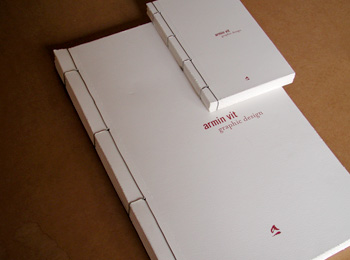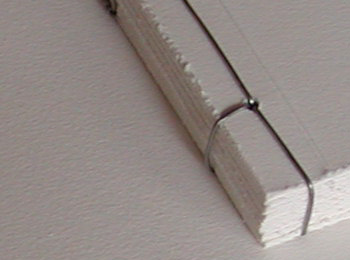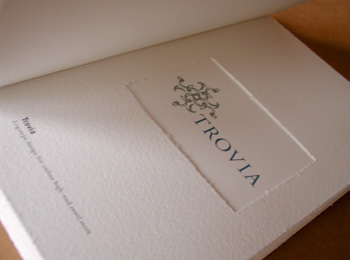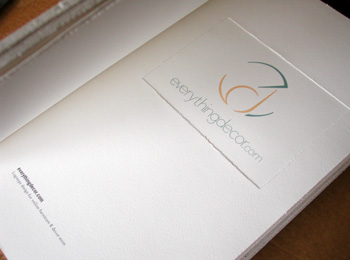I notice that many Speak Up readers are designers who have “been there, done that” with respect to job interviews and many who hire for their respective firms. I am sure these designers have seen their share of the “Designer’s Black Book.”
I go for my first design-related formal interview next week. I must make a Book. I’ve never seen a completed example. I know the basic idea: that it’s a small collection of only your very best work. Perhaps arranged chronologically, by media, or by personal preference. Perhaps it’s shown in a case, on boards, or in a finished bound book. In all, I know that it’s what the book contains that counts more to the company than the jazzy binding I slap on it. But nonetheless I am compelled to make a simple, clean, sexy Book.
Does anyone have photos of theirs? Formats? How many pieces is entirely too much? 5? 10? 15? What’s overdone these days style-wise/layout-wise? What’s entirely inappropriate? Are brief descriptions of each piece (title, media, number of pages, print specs, date, brief explanation) appropriate? Is merely (carefully) mounting the pieces on boards with no explanation expected/preferred? Is it standard to show up with two books: the “book-that-you-only-show-and-never-give-out-to-keep” plus another “book-that-you-give-for-keeps”? Can supplying a portfolio URL substitute as a giveaway printed book? What was the best book you’ve ever seen?
Tell me about your Book.
Thanks to Priya Patel for the topic and entry. Good luck!










Mmm...good topic. As a designer who has been around a little but certainly not achieved "been there, done that" status, I'll give you my take.
First and foremost, show the pieces that best show your abilities and what you would like to do. Don't go to an interview for a corporate ID job with nothing but a web portfolio. Sounds obvious, I know. There's no golden rule for how many, but if you are just out of school, 10-15 is plenty. Most interviewers don't have a lot of time, so the more work you show, the longer the interview will go and they are less likely to pay better attention to the truly great pieces in your book.
Formatwise, I like to have something that's a little stylish but doesn't overwhelm the contents. Portfolio Center, where I graduated, used to be well known for its grad books. They were often massively elaborate trays of pull outs and bound books. My book was digital c-prints (I hate transparencies in portfolios, unless you are a photographer) matted and mounted on black boards. Not fancy, but the work is the important factor, and I had no trouble getting a job. Currently, my book consists of 2 silver wire-o books, french folded, one 8.5x11 of my print, packaging and identity work, and a smaller 5x5 book of just logos.
If you are leaving behind something, keep it short, with 4-5 of the best of the best. Include a title and VERY brief project description. Don't forget to put your name and contact info in the book. Books and resumes get separated. Don't get skipped over because nobody can find your number.
Oh, as for quality of print outs, I've seen HP deskjet prints to actual photographs to Canon laser prints. As long as it's good quality and doesn't make your beautifully drawn typography look like it's made of brown sugar, then you'll be fine.
And last but not least, know how to talk about each piece! Give a brief overview of the assignment and what your concept was to solve the problem. Be prepared to get further in detail if asked. I hated interviewing people who would describe a piece as "a business paper system" with no more detail. Why'd you use that typeface? "Because I like it," is not correct. The work may be nice, but Creative Directors want to know you understand why it is nice and what your thinking process was to get to that point. Most design can be taught, but intelligence is harder to get.
On Oct.01.2003 at 11:35 AM